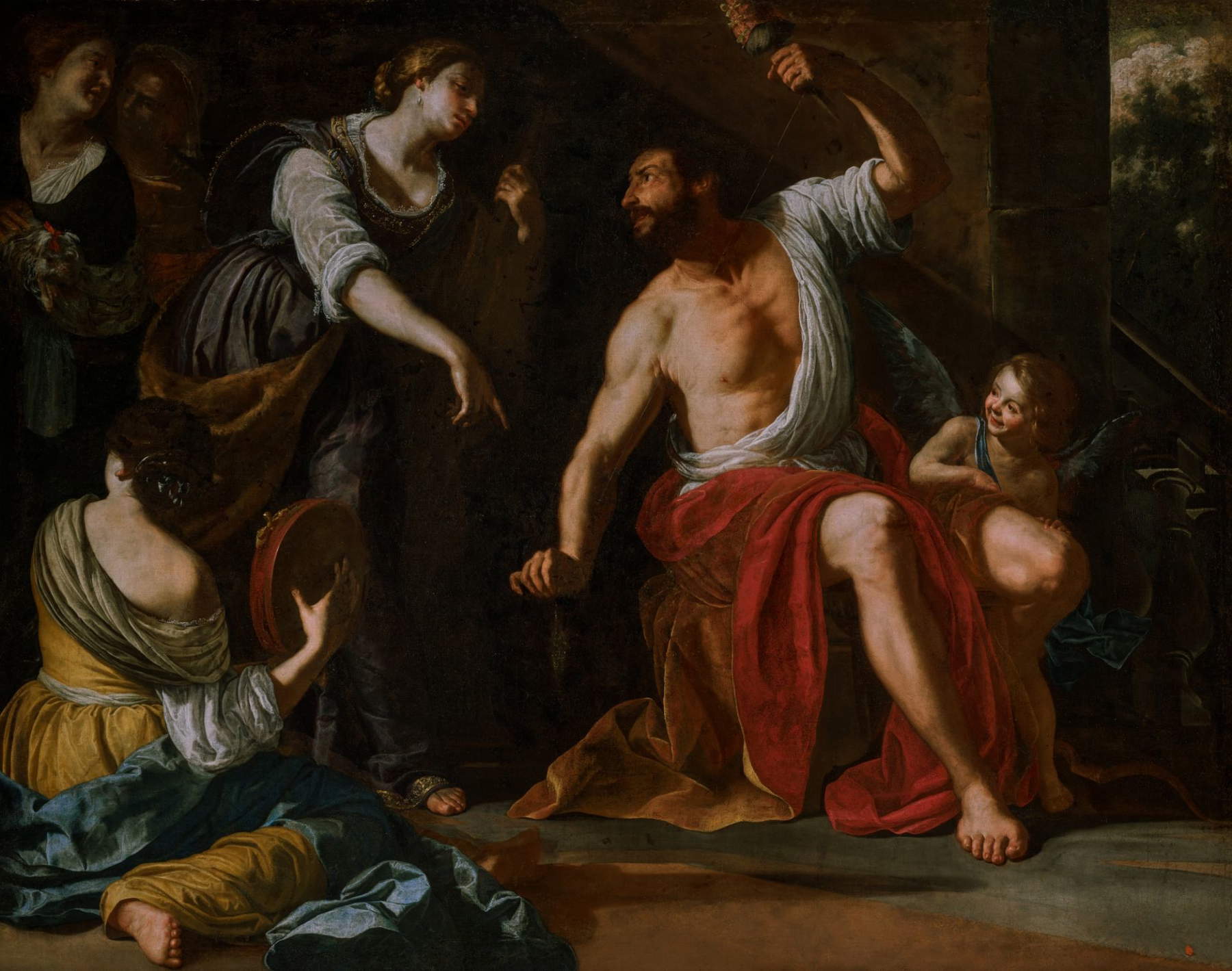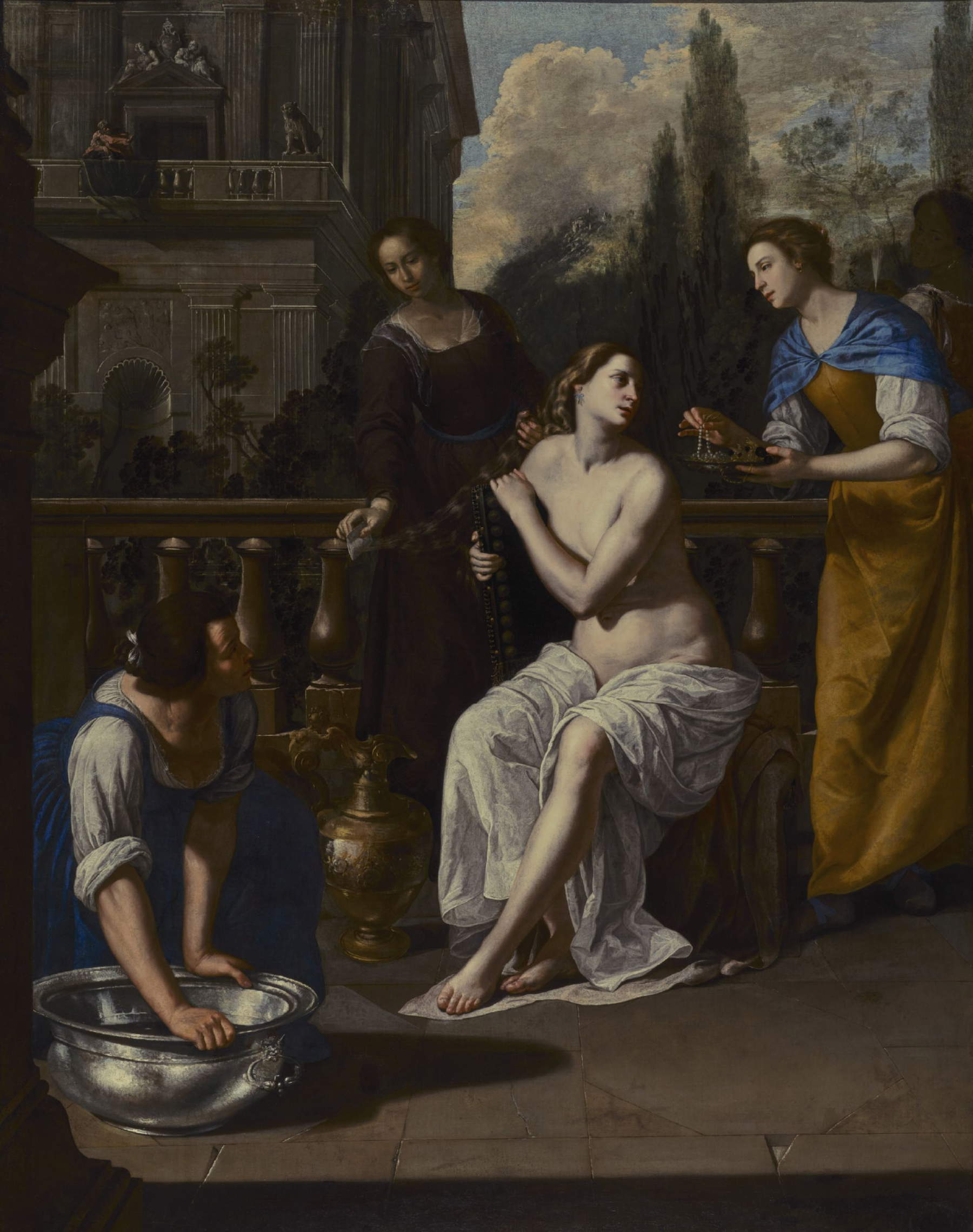Artemisia Gentileschi stars in the United States. In fact, the Columbus Museum of Art (CMA) has announced the opening of the exhibition Artemisia Gentileschi: Naples to Beirut, dedicated to the great seventeenth-century Italian painter, among the most famous female figures in art history. The exhibition, scheduled from Oct. 31, 2025 to May 31, 2026, brings together some of the most significant works from the artist’s Neapolitan period and marks the arrival in Columbus of theHercules and Onphale attributed to her, on loan from the Getty Museum in Los Angeles.
The work, thought to have been lost for centuries, came to light under extraordinary circumstances after an explosion devastated the port of Beirut on August 10, 2020. Severely damaged by the blast wave, the painting underwent a complex three-year restoration at the Getty Museum, where it was first displayed in June 2025. Now, the canvas arrives in Columbus to be presented in dialogue with another work from the same period, Bathsheba (ca. 1635-1637), from the museum’s collection.
Alongside these two works, Naples to Beirut also presents Lucretia (1627), a painting purchased by the Getty in 2021 and loaned for the occasion, along with works by artists who worked in seventeenth-century Naples, including Salvator Rosa, Jusepe de Ribera, and Mattia Preti (Il Calabrese).


Born in Rome in 1593 and trained in the workshop of her father Orazio Gentileschi, Artemisia showed from an early age an extraordinary mastery of Caravaggio’s language. After years spent between Rome and Florence, where she became the first woman admitted to the Accademia delle Arti del Disegno, she moved to Naples in 1630. Here she found a fertile and cosmopolitan environment, rich in commissions and opportunities for collaboration with Italian and foreign artists. It was in this context that he produced some of his most powerful and mature works, devoted to female figures drawn from the Bible and mythology, often depicted as symbols of strength and freedom.
The Columbus Museum of Art, with Naples to Beirut, aims to explore precisely this phase of his career, reconstructing the dialogue between the artist and the vibrant Neapolitan cultural scene of the time. As Daniel Marcus, curator of collections and exhibitions at the CMA, explains, "this exhibition offers the public an opportunity to see Artemisia Gentileschi at a crucial moment in her career and to engage with one of the most important artistic rediscoveries of recent years. To see theHercules and Onphale and Bathsheba juxtaposed with Lucrezia and the works of her contemporaries is to enter the heart of her artistic vision and ambition."
The exhibition also delves into the story of Hercules and Onphale. The work depicts an episode from the Greek myth in which Hercules, enslaved by Queen Onphale, is forced to wear women’s clothes and perform domestic work, while the woman wears the symbols of masculine strength: the lion’s skin and the olive wood club. The artist depicts the moment when the two fall in love, transforming a subject of submission into a scene of intimacy and shared power.
In parallel, Bathsheba, belonging to the permanent collections of the CMA, shows the artist’s ability to render the dramatic tension and psychological complexity of biblical female characters, confirming his mastery in the construction of light and the rendering of emotions.
A section of the exhibition is devoted to the history of the restoration of Hercules and Onphale, documented with photographic and video materials recounting the stages of the painting’s recovery and conservation. The CMA has also developed an interactive digital installation that will allow visitors to explore how different European artists between the 16th and 17th centuries interpreted the myth of Hercules and Onphale, highlighting the fortunes of this theme in post-Renaissance art.
The exhibition also includes a 16th-century marriage portrait from the museum’s Renaissance art collection, chosen to offer historical context to the way Gentileschi depicts love and the power relationship between man and woman. As a tribute to the place where the painting was found, the exhibition also features a work by Lebanese photographer and art historian Gregory Buchakjian, who identified Hercules and Onphale in Beirut’s Sursock Palace after the 2020 explosion. In 2021 Buchakjian had created, for an exhibition at Villa Empain (Fondation Boghossian) in Brussels, a mural installation consisting of 25 photographic details of the damaged painting, arranged in full scale and accompanied by textual annotations. For Naples to Beirut, the artist reworked that project in the form of a photographic lightbox, offering a tribute to the city of Beirut and its ability to be reborn from rubble.
Through this dialogue between past and present, Naples to Beirut moreover becomes a reflection on the value of memory and art in the face of destruction. The exhibition also confirms the Columbus Museum of Art’s commitment to enhancing its collection and promoting new perspectives on art history with initiatives that weave together research, conservation and visual storytelling.
 |
| Artemisia Gentileschi in the U.S.: works from the Neapolitan period on display at the Columbus Museum of Art |
Warning: the translation into English of the original Italian article was created using automatic tools. We undertake to review all articles, but we do not guarantee the total absence of inaccuracies in the translation due to the program. You can find the original by clicking on the ITA button. If you find any mistake,please contact us.